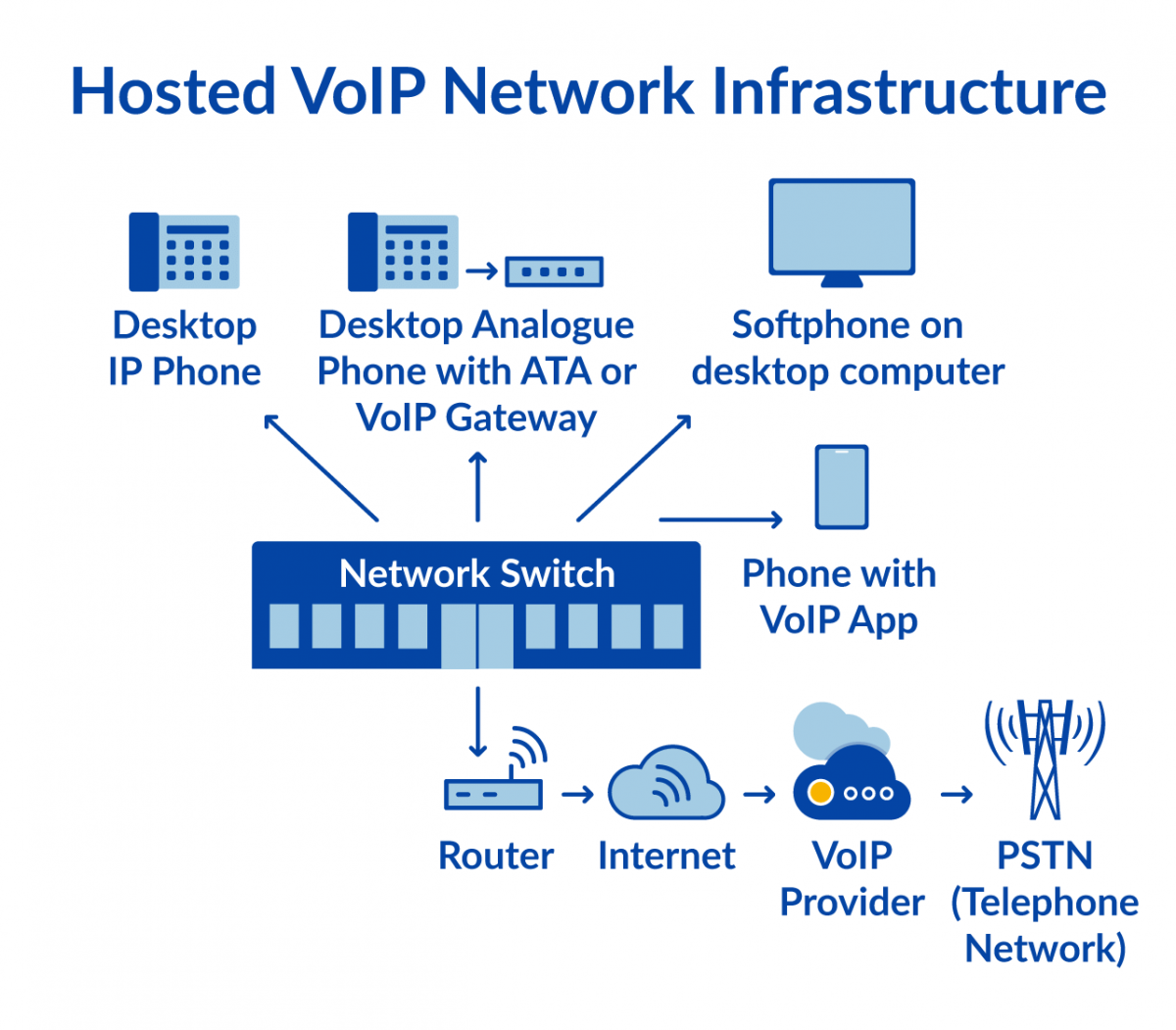voip ip has emerged as a transformative force in the landscape of modern communication, harnessing the capabilities of Internet Protocol technology to facilitate voice communication over the internet. This evolution has drastically changed the way individuals and businesses connect, providing a seamless experience that transcends traditional telephony. Over the years, VOIP systems have advanced significantly, offering both benefits and challenges that merit consideration in today’s interconnected world.
In this discussion, we will delve into the foundational aspects of VOIP technology, exploring its key components, the essential role of IP addresses, and the impact of codecs on call quality. Furthermore, we will investigate the implementation of VOIP in business settings, highlighting important steps and comparing various service providers. Lastly, we will examine future trends and innovations that could reshape the VOIP landscape, particularly with the integration of artificial intelligence and machine learning.
Introduction to VOIP and IP Technology
Voice over Internet Protocol (VOIP) represents a transformative approach to communication technology by allowing voice and multimedia content to be transmitted over Internet Protocol (IP) networks. This innovation has significantly altered the landscape of telecommunication, offering users a range of functionalities that traditional methods could not match.VOIP technology evolved from the need to enhance communication efficiency and reduce costs associated with traditional telephony.
Using voip Skype can greatly enhance communication efficiency within your organization. This platform offers a user-friendly interface that allows for seamless voice and video calls over the internet. By implementing a robust system voip , you can ensure high-quality connections that support collaboration and productivity among your team members.
Early implementations in the 1990s, such as VocalTec’s Internet Phone, paved the way for digital voice transmission over the internet. Over time, improvements in bandwidth and compression codecs fostered the adoption of VOIP by both businesses and individual consumers. Today, systems like SIP (Session Initiation Protocol) and various cloud-based solutions have further advanced VOIP capabilities, integrating features such as video conferencing and instant messaging.
Advantages of VOIP Solutions
The utilization of VOIP solutions offers various advantages that enhance modern communication practices. These benefits can be summarized as follows:
- Cost Efficiency: VOIP significantly reduces the costs associated with long-distance and international calls, often eliminating per-minute charges.
- Flexibility: Users can make calls from various devices, including smartphones, tablets, and computers, provided they have internet access.
- Feature-Rich Services: Many VOIP solutions come with integrated features like voicemail, call forwarding, and video conferencing, often at no additional cost.
- Scalability: Businesses can easily scale their VOIP services according to their needs without significant infrastructure investments.
- Enhanced Collaboration: The ability to communicate via voice, video, and messaging on a single platform fosters better teamwork and collaboration.
Disadvantages of VOIP Solutions
While VOIP systems present numerous advantages, potential drawbacks must also be considered. Understanding these limitations is crucial for informed decision-making.
- Dependency on Internet Connection: VOIP relies heavily on a stable internet connection; poor connectivity can affect call quality and reliability.
- Power Outages: Unlike traditional phone lines, VOIP services may be unavailable during power outages unless backed up by an alternative power source.
- Potential Security Risks: VOIP systems are prone to hacking and eavesdropping if not adequately secured, requiring robust security measures.
- Emergency Calls: The ability to make emergency calls may be limited with some VOIP services, as location information may not be transmitted accurately.
- Latency and Jitter: Network congestion can lead to delays and inconsistent voice quality, especially in high-traffic conditions.
“VOIP technology not only transforms communication but also requires careful consideration of its advantages and limitations.”
Key Components of VOIP Systems

A Voice over Internet Protocol (VOIP) system comprises several critical components that work together to facilitate voice communication over the internet. Understanding these components allows for a deeper appreciation of how VOIP technology operates and its advantages over traditional telephony systems.The essential components of a VOIP system can be categorized into hardware and software elements. Each plays a vital role in ensuring seamless communication.
Below are the key components that make up these systems:
Essential Components of a VOIP System, Voip ip
The effective operation of a VOIP system relies on several interrelated components that enable the transmission of voice data over the internet.
- IP Phones: These devices are specifically designed to transmit voice data over a network. They can be hardware-based, resembling traditional phones, or software-based, functioning on computers or mobile devices.
- VOIP Gateways: Gateways bridge conventional telephone lines with IP networks, allowing for the integration of legacy phone systems with modern VOIP technology.
- Session Border Controllers (SBCs): SBCs manage and secure VOIP traffic, ensuring quality and protecting against malicious attacks.
- Call Management Servers: These servers handle call signaling and control functions, managing call setup, routing, and termination.
- IP Networks: A robust IP network is essential for transferring voice data packets effectively, minimizing latency and packet loss.
Functionality of IP Addresses in VOIP Networks
IP addresses play a crucial role in VOIP networks, serving as unique identifiers for devices connected to the internet. They ensure that voice data packets are accurately routed from the sender to the receiver.When a VOIP call is initiated, the sender’s device uses an IP address to locate the recipient’s device. This mechanism allows for the establishment of a direct connection over the internet, bypassing traditional telephone lines.
Adopting a reliable system voip is essential for modern businesses looking to streamline their communication processes. This technology enables voice data transmission over the internet, facilitating cost-effective and efficient conversations. By integrating tools like voip Skype , companies can enhance their connectivity while enjoying features such as video conferencing and instant messaging, fostering collaboration across distances.
Moreover, dynamic IP addressing can be employed, where devices receive temporary IP addresses from a DHCP server, facilitating seamless connectivity without the need for static configurations.
The Role of Codecs in VOIP Call Quality
Codecs are vital in defining the quality and clarity of VOIP calls. These algorithms compress and decompress voice data, allowing it to be transmitted efficiently over the internet while minimizing bandwidth usage.Several factors influence the choice of codec, including:
- Voice Quality: Codecs vary in their ability to maintain audio quality during compression. Higher quality codecs like G.711 provide superior sound but require more bandwidth, while G.729 offers lower bandwidth usage with acceptable sound quality.
- Latency: The codec’s processing time can introduce latency, affecting the real-time nature of conversations. Low-latency codecs are preferred in environments where immediate feedback is essential.
- Network Conditions: In environments with limited bandwidth, selecting a codec that balances quality and compression becomes critical. Adaptable codecs can adjust their compression rates based on available bandwidth.
“The choice of codec can significantly impact the overall user experience in VOIP communication.”
Implementation of VOIP in Business

The deployment of Voice over Internet Protocol (VOIP) technology in a business setting is a strategic move that can significantly enhance communication efficiency while reducing costs. This process involves several critical steps and considerations to ensure a successful transition from traditional telephony systems to VOIP solutions.Implementing VOIP technology requires careful planning and execution. Organizations must assess their current communication needs, infrastructure, and potential service providers.
The following steps Artikel the deployment process:
Steps for Deploying VOIP Technology
Establishing a VOIP system involves a series of essential steps that ensure the technology aligns with business needs. Each step contributes to a seamless transition and optimal performance.
- Assessment of Communication Needs: Analyze current communication methods and identify areas where VOIP can improve efficiency.
- Infrastructure Evaluation: Review existing IT infrastructure to determine compatibility with VOIP systems, including internet bandwidth and network capabilities.
- Selection of a VOIP Provider: Research and compare different VOIP service providers based on features, pricing, and customer support.
- Network Configuration: Set up routers and switches to ensure optimal performance of VOIP services, including Quality of Service (QoS) settings.
- Hardware Procurement: Acquire the necessary hardware such as IP phones, headsets, and any additional equipment.
- System Integration: Integrate the VOIP system with existing business applications and software for enhanced functionality.
- Training and Support: Provide staff training on using the new system and establish ongoing technical support for troubleshooting.
Comparison of Different VOIP Service Providers
Choosing the right VOIP service provider is crucial for maximizing the benefits of the system. The following comparison highlights key features and pricing from several leading providers, which can assist businesses in making informed decisions.
“Selecting a provider with the right features and pricing can significantly impact the effectiveness of your VOIP implementation.”
| Provider | Key Features | Starting Price |
|---|---|---|
| RingCentral | Unlimited calling, video conferencing, team messaging | $19.99/month/user |
| 8×8 | Integrated video, voice, SMS, and fax | $12/month/user |
| Nextiva | Voicemail to email, call forwarding, analytics | $19.95/month/user |
| Vonage | Mobile app, virtual receptionist, call blocking | $19.99/month/user |
Recommended Hardware for Setting Up a VOIP System
Selecting appropriate hardware is vital to ensuring a smooth and effective VOIP implementation. The following table Artikels essential equipment and their functionalities that a business should consider when establishing a VOIP system in an office.
| Hardware | Description |
|---|---|
| IP Phones | Dedicated phones designed for VOIP with features like programmable keys and high-quality audio. |
| VoIP Gateways | Devices that connect traditional phone lines with VOIP systems, facilitating seamless communication. |
| Routers | High-quality routers with QoS settings to prioritize voice traffic over other types of data. |
| Headsets | USB or wireless headsets for improved call clarity and mobility for remote teams. |
| Power over Ethernet (PoE) Switches | Switches that provide power and data connectivity to devices, simplifying wiring and installation. |
Future Trends in VOIP Technology: Voip Ip

The landscape of Voice over Internet Protocol (VOIP) technology is continuously evolving, driven by advancements in digital communication and the growing demands of users for enhanced functionalities. As we project into the future, several emerging trends indicate a significant shift in how VOIP services will be utilized across various sectors, ultimately transforming communication methods.One of the most notable trends in VOIP technology is the increasing integration of artificial intelligence (AI) and machine learning.
These technologies have the potential to revolutionize VOIP services, enabling smarter communication solutions and improving user experiences. AI can analyze user behavior, optimize call routing, and even facilitate real-time language translation, thereby breaking down language barriers in communication.
Integration of AI and Machine Learning in VOIP
The impact of AI and machine learning on VOIP services cannot be overstated. By leveraging these technologies, businesses can enhance their communication networks in various ways:
Call Analytics and Insights
AI can provide detailed analytics on call patterns, helping organizations understand customer interactions better and adjust their strategies accordingly.
Speech Recognition
Machine learning algorithms can improve speech recognition accuracy, enabling features such as automated transcription services and voice commands that streamline user interaction.
Personalized Customer Interactions
AI-driven systems can analyze customer preferences and tailor communication approaches, resulting in a more personalized experience.
Fraud Detection
AI can monitor VOIP networks for unusual activity, helping to detect and prevent fraudulent calls, thus enhancing security.In addition to AI advancements, there are specific industries poised to benefit significantly from adopting future VOIP solutions. These include:
Healthcare
With telemedicine on the rise, healthcare providers can leverage VOIP for remote consultations, ensuring efficient patient care without geographical limitations.
Education
Educational institutions can utilize VOIP for virtual classrooms, allowing for interactive learning experiences that connect students and educators regardless of location.
Customer Support
Companies in the customer service sector can implement VOIP systems to enhance customer interactions through features like call monitoring, automated responses, and improved ticketing systems.
Remote Work Environments
As remote work continues to flourish, VOIP technologies will increasingly serve as the backbone for team collaboration, offering tools that facilitate seamless communication across distributed teams.These trends signify a future where VOIP technology not only simplifies communication but also enhances operational efficiencies across various industries, fundamentally altering how businesses and individuals interact.